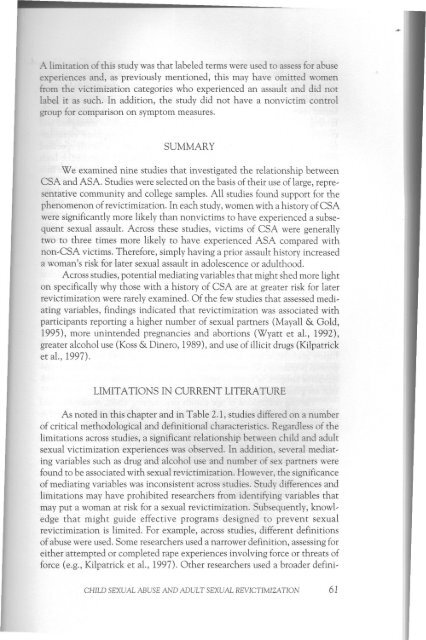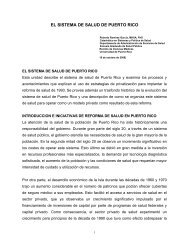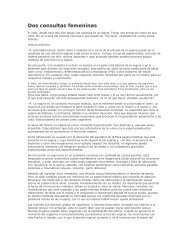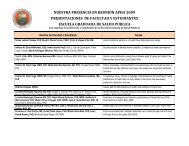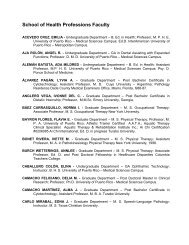CHILD SEXUAL ABUSE AND ADULT SEXUAL REVICTIMIZATION
CHILD SEXUAL ABUSE AND ADULT SEXUAL REVICTIMIZATION
CHILD SEXUAL ABUSE AND ADULT SEXUAL REVICTIMIZATION
Create successful ePaper yourself
Turn your PDF publications into a flip-book with our unique Google optimized e-Paper software.
A limitation of this study was that labeled terms were used to assessfor abuse<br />
experiences and, as previously mentioned, this may have omitted women<br />
from the victimization categories who experienced an assault and did not<br />
label it as such. In addition, the study did not have a nonvictim control<br />
group for comparison on symptom measures.<br />
SUMMARY<br />
We examined nine studies that investigated the relationship between<br />
CSA and ASA. Studies were selected on the basis of their use of large, representative<br />
community and college samples. All studies found support for the<br />
phenomenon of revictimization. In each study, women with a history of CSA<br />
were significantly more likely than nonvictims to have experienced a subsequent<br />
sexual assault. Across these studies, victims of CSA were generally<br />
two to three times more likely to have experienced ASA compared with<br />
non-CSA victims. Therefore, simplyhaving a prior assault history increased<br />
a woman's risk for later sexual assault in adolescence or adulthood.<br />
Across studies,potential mediating variables that might shed more light<br />
on specifically why those with a history of CSA are at greater risk for later<br />
revictimization were rarely examined. Of the fewstudies that assessedmediating<br />
variables, findings indicated that revictimization was associated with<br />
participants reporting a higher number of sexual partners (Mayall & Gold,<br />
1995), more unintended pregnancies and abortions (Wyatt et al., 1992),<br />
greater alcohol use (Koss& Dinero, 1989), and use of illicit drugs (Kilpatrick<br />
et al., 1997).<br />
LIMITATIONS IN CURRENT LITERATURE<br />
As noted in this chapter and in Table 2.1, studies differedon a number<br />
of critical methodological and definitional characteristics. Regardlessof the<br />
limitations acrossstudies, a significant relationship between child and adult<br />
sexual victimization experiences was observed. In addition, several mediating<br />
variables such as drug and alcohol use and number of sex partners were<br />
found to be associatedwith sexual revictimization. However, the significance<br />
of mediating variables was inconsistent acrossstudies. Study differences and<br />
limitations may have prohibited researchers from identifying variables that<br />
may put a woman at risk for a sexual revictimization. Subsequently, knowledge<br />
that might guide effective programs designed to prevent sexual<br />
revictimization is limited. For example, across studies, different definitions<br />
of abusewere used. Some researchers used a narrower definition, assessingfor<br />
either attempted or completed rape experiences involving force or threats of<br />
force (e.g., Kilpatrick et al., 1997). Other researchers used a broader defini-<br />
CHIW <strong>SEXUAL</strong> <strong>ABUSE</strong> <strong>AND</strong> <strong>ADULT</strong> <strong>SEXUAL</strong> REVICTIMlZATION 61


